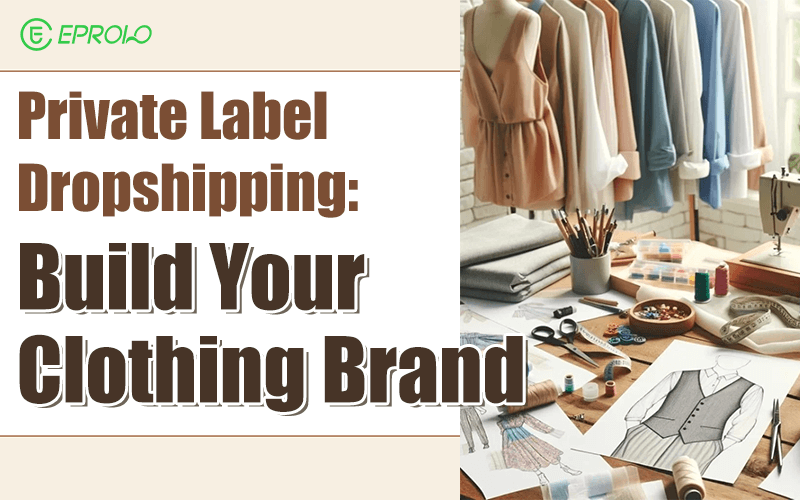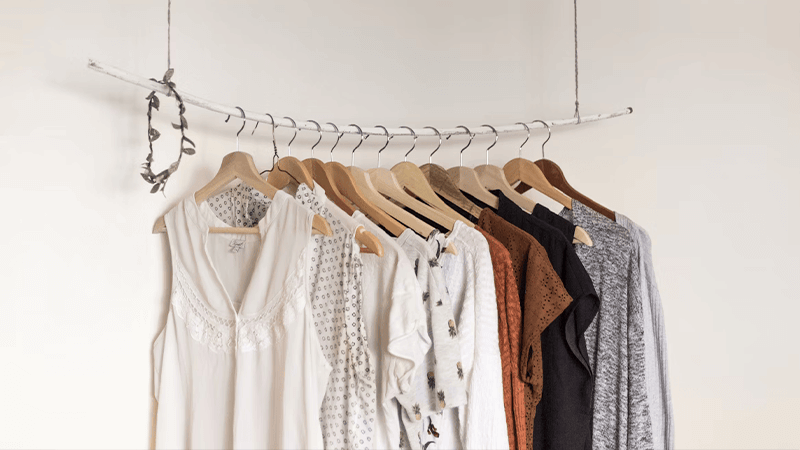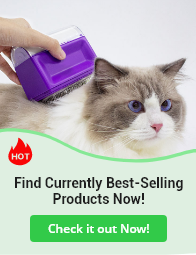Private label dropshipping has lowered the barrier to entry—but it’s also raised the bar. Consumers don’t want generic prints anymore. If you’re starting a clothing brand, your job is not just to sell fabric. It’s to sell identity, belonging, and a point of view.
This guide walks you through how to build a real clothing brand, not just an online storefront. One that stands out in the crowd—and stands the test of time.

Page overview:
01 | Define the Brand Before the Clothes
02 | Product Strategy: You Don’t Need 50 SKUs
03 | Design and Branding Execution: Where Dropshipping Fails (Unless…)
04 | Storefront and Positioning: Make People Feel Something
05 | Go-to-Market: Launch Like a Magazine, Not a Catalog
01 | Define the Brand Before the Clothes
Too many beginner brands start with the product. But successful labels—whether minimalist loungewear or street-ready graphic tees—start with clarity:
- What does your brand believe in?
Are you about slow fashion? Body positivity? Subculture aesthetics? - Who is your customer—really?
Not just “men 18–35.” Are they vintage collectors? Gym introverts? Creators? - What emotional role does your clothing play?
Does it make the wearer feel powerful, seen, ironic, safe?
Once you have sharp answers, build your brand system:
- Name
- Tone of voice
- Brand visuals
- Taglines or slogans
- Story narrative (why you exist, not just what you sell)
*In all, if your clothes were a person, what kind of friend would they be?
02 | Product Strategy: You Don’t Need 50 SKUs
Forget launching with a huge catalog. A successful launch can start with three to five items—as long as they’re coherent and focused.
Focus on:
- Category depth over variety: One great tee, one hoodie, one jogger, all speaking the same aesthetic.
- Seasonal relevance: Lightweight for spring? Layerable for fall?
- Real differentiation: Better cut, better fabric, better message.
*Example: If your brand is about mental health awareness, maybe your hero product is a heavyweight hoodie with embroidered affirmations inside the cuff—discreet, personal, wearable daily.
03 | Design and Branding Execution: Where Dropshipping Fails (Unless…)
Most “private label” dropshipping fails here—not because of the idea, but because the product looks like any other Aliexpress blank with a logo slapped on.
To avoid that fate:
- Custom labels and tags are non-negotiable.
- Packaging must carry your story—even a kraft mailer can be brand-building.
- Consistency across all touchpoints: Website, emails, product, unboxing, socials.
This is where EPROLO steps in
EPROLO is not just a print-on-demand tool. It’s a platform built to help you build a brand, with:
- Custom woven labels, hangtags, logo packaging, care labels—all stored and applied automatically.
- Product library with premium blanks (not just the usual white tees).
- Global fulfillment to over 40 countries.
- No storage fees for your branding materials.
- Shopify, WooCommerce, and Etsy integrations for fast store syncing.
You design the brand. EPROLO handles everything behind the scenes—with zero upfront inventory risk.
*That’s how indie labels stay lean AND premium.

04 | Storefront and Positioning: Make People Feel Something
Your ecommerce site should feel like your brand—visually and emotionally.
Checklist:
- Design language that matches your brand tone (gritty? clean? soft?)
- Lifestyle imagery > mockups (use user-generated content when possible)
- Model diversity that reflects your customer base
- Strong editorial-style About page (this is your manifesto)
- First product drop treated like an event, not just a listing
Build desire before you build SKU count.
05 | Go-to-Market: Launch Like a Magazine, Not a Catalog
You’re not just selling a hoodie. You’re publishing a vibe.
Instead of chasing sales with random posts:
- Launch collections like a campaign: visual theme, matching tone, timed releases
- Build an email waitlist before release
- Partner with niche micro-influencers who already live your brand lifestyle
- Use TikTok or Instagram as a journal, not a billboard—share BTS, design decisions, test prints
- Run paid ads only after you know what content resonates organically
Remember: In fashion, people don’t buy the product first—they buy into the world around it.
Final Thoughts: The Brand Is the Moat
Dropshipping makes it easy to start a clothing business. But the only way to last—is to build a brand.
That means:
- Telling a consistent story
- Designing intentionally
- Picking the right partner to handle production without diluting your vision
And if you’re serious about turning ideas into wearable identity, EPROLO’s Private Label Apparel Program gives you the supply chain, branding tools, and shipping infrastructure you need—without locking up capital.
Make fewer products, tell a clearer story, and ship it smart.
That’s how real brands are born.
FAQ: Private Label Apparel & Dropshipping
Q1: What’s the minimum order quantity (MOQ) for private label apparel with EPROLO?
EPROLO is a leading dropshipping platform, which means they don’t have minimal order requirements for most products, including private label apparel.
Q2: Can I test product-market fit before investing in custom labels or tags?
Yes. You can launch your first collection using blank products or standard POD garments to validate interest and gather real customer feedback. Once you identify your best-sellers, you can scale with custom branding using EPROLO’s branding service. This phased approach lowers your startup risk while still supporting long-term brand goals.
Q3: How long does fulfillment take for private label dropshipping orders?
Standard production time is 2–7 business days, depending on whether it’s print-on-demand or stocked blank apparel. Shipping typically takes:
- 7–12 days to the U.S.
- 5–10 days to major European countries
- 10–15 days for other global locations
Custom-branded packaging may add 1–2 days to processing during peak periods.
Q4: Can I sell on multiple platforms with EPROLO?
Yes. EPROLO integrates with:
- Shopify
- WooCommerce
- Etsy
- eBay
- TikTok Shop
You can manage all orders and inventory from a single dashboard. It supports multi-store syncing and auto-updates product details and tracking info in real time.
Q5: What happens if I want to scale into full inventory or move beyond dropshipping later?
EPROLO offers both dropshipping and bulk purchasing support, meaning you can start lean and later transition to:
- Pre-stocking your best-selling products
- Creating exclusive product specs or fits
- Running larger branding campaigns
It’s a scalable system—ideal for turning a side hustle into a full-fledged fashion business.







